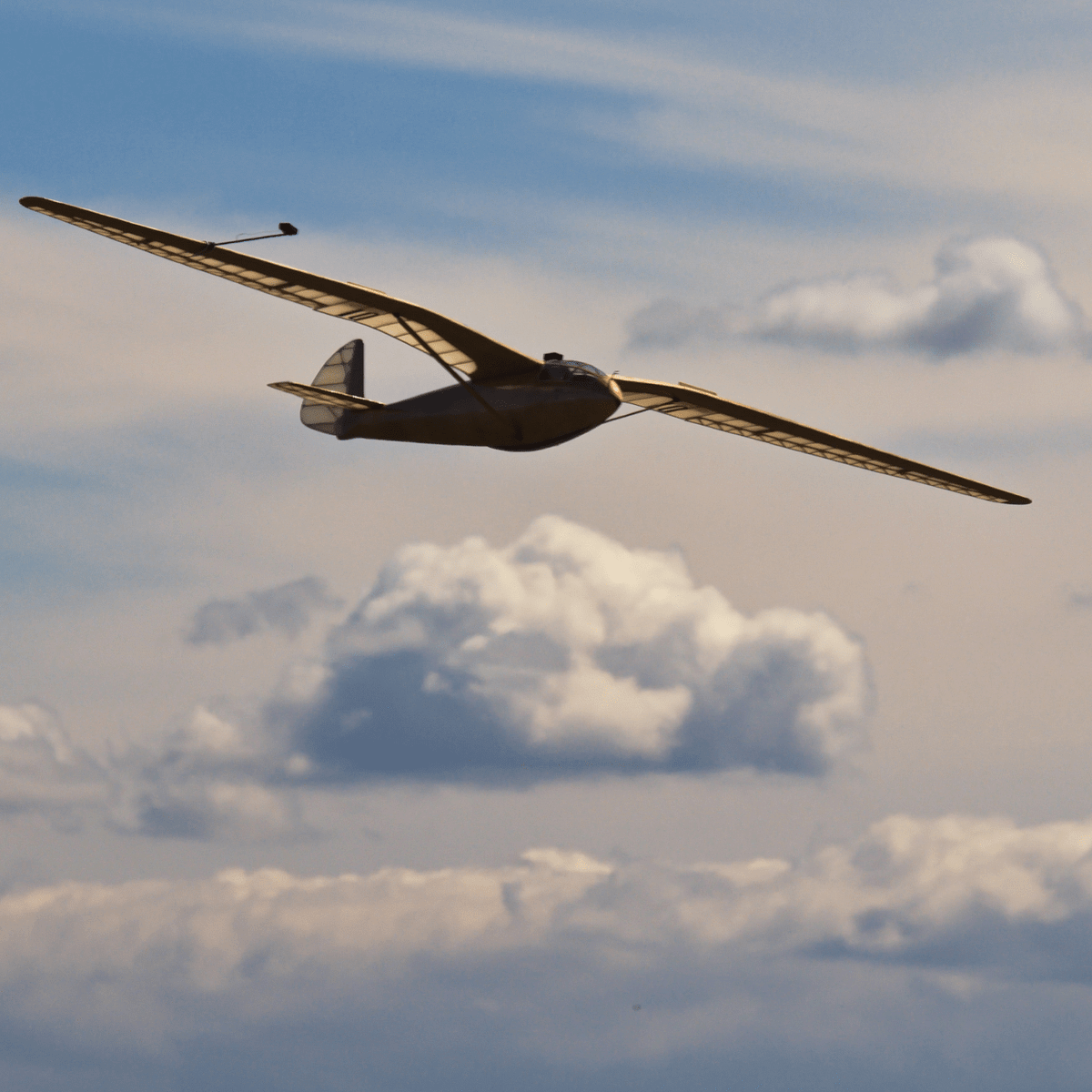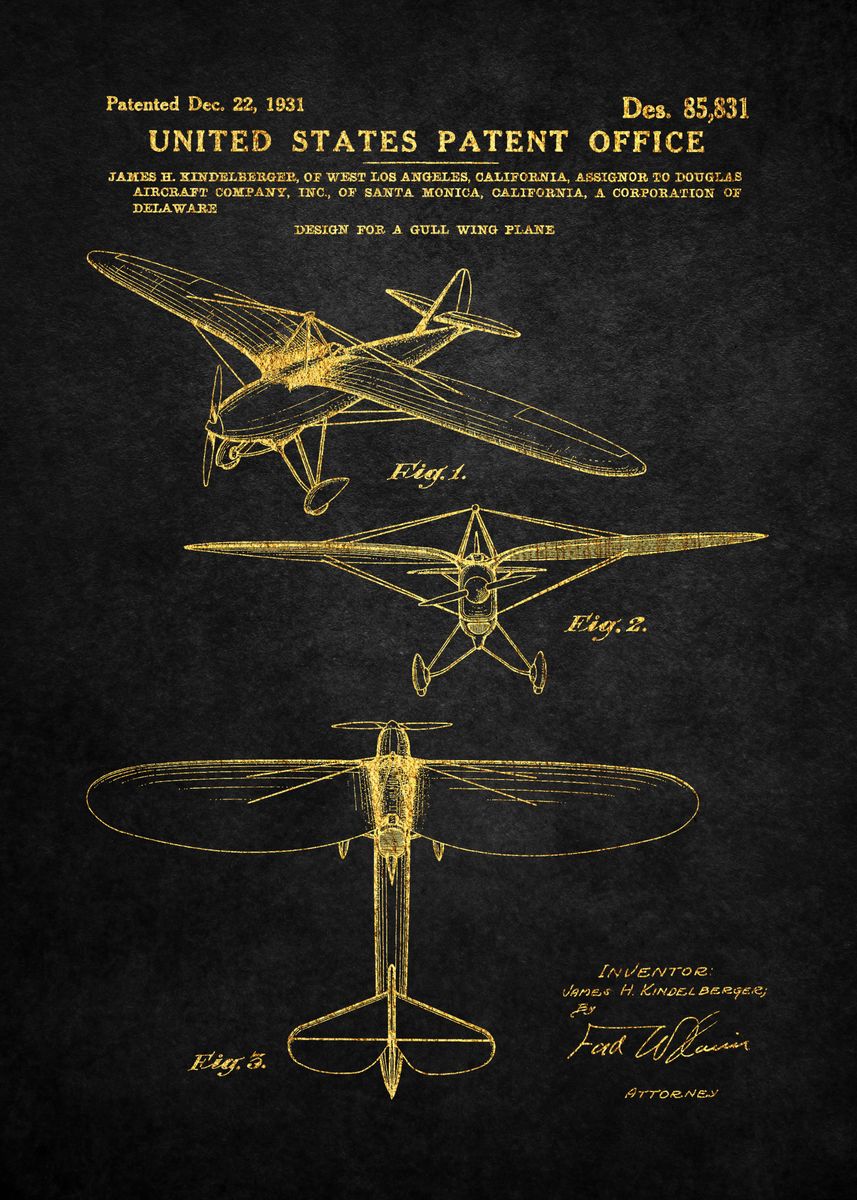Gull Wing Aircraft - Stock Exchange is a question and answer site for airline pilots, mechanics and enthusiasts. It only takes a minute to sign up
I noticed that the wings on the A380 are much more curved than the 747 I mean the 747 has a lot of wing flex but the A380 has shorter wings and the wings are curved compared to the 747. A couple of photos to help you understand what I'm writing about So why is the A380 winged the way it is and what are its benefits? source
Gull Wing Aircraft
/https://tf-cmsv2-smithsonianmag-media.s3.amazonaws.com/filer/83/05/83053148-4b8f-4ab6-8a89-c092b5301e70/06v_fm2019_fmhocomposite_live.jpg)
The A380 has a gull-wing design It has some economic advantages, the main one being the smaller landing gear while providing sufficient ground clearance for the engines.
Stinson Gullwing V 77
Aurelios' answer already covers most of the points It may be worth adding that this is not a clear gull wing, but towards a dihedral setup with increased volume at the front corners. This is most obvious when viewed from behind while flying
There aren't many pictures of one flying and from behind but this (taken from Wikipedia) might give an indication:
More space for engine mounts of smaller and lighter landing gear (as the Ju87 provides reverse gully wind guides) along with the previously mentioned advantages.
Enhanced comfort is one of the A380's respected design criteria Those who have had the chance to climb have enjoyed the results So considering the often conflicting requirements for wing (and fuselage) design, it represents a sweet spot - at least when a certain size is reached :))
Pzl P.11c. Polish Fighter Aircraft 'inspirations' By Adam Gudynowski
By clicking "Accept All Cookies", you agree that Stock Exchange may store cookies on your device and disclose information in accordance with our Cookie Policy. Leonard Ward Bonney was an early aviator who flew with the Wright Exhibition Team in 1910. A veteran aviator who served in World War I, Bonney set out to develop an aircraft with more efficient wings and controls than contemporary aircraft. Noting the Gull's two-to-one lift-to-weight ratio, he began shaping the Gull's wings. The construction took five years These concepts were tested in wind tunnels at MIT and at the Daniel Guggenheim School of Aeronautics.
It has a fat body with graceful curved wings The Bonnie followed the bird principle, omitting the ailerons, or balancing device that aircraft designers have always considered an important feature of stability in the air. New features of his aircraft were: a tail that extended and contracted like a blackbird for different loads; Variable camber on the wings so that they are as flat as a gull in flight A different angle to its wings so that they turn sideways in the wind during landing... [3]
The guard is assembled at the Kirkham facility in Guard City, New York and Mitchell Field It used conventional landing gear, mid-wing arrangements, corrugated aluminum skins and radial wings. The cockpit has a large greenhouse bubble with two seats Large tailwheel steerable and full fairing The tail used small vertical stabilizers, large elevators that could be rotated in flight.

The aircraft's profile was not unusual for the era, except for the large dihedral and large tapered tail surfaces with strong sweep and trailing wings.
Gull Wing Guardian
The wings are mounted flush with the aircraft, but have a mechanism that allows them to rotate at an angle of incidence, and fold from a 10 degree sweep to a 40 degree sweep for braking and storage.
These features were incorporated into future carrier aircraft such as the Firefly for storage in addition to braking and flight controls. Variable incidence mechanisms are commonly used to trim the tail surfaces, but some aircraft such as the Vought F-8 Crusader have put the concept into practical use. Some high-speed aircraft use a variable sweep mechanism, such as the General Dynamics F-111 Aardvark, to extend their flight envelope. Bonney used differential sweep for roll control
Once the landing gear was damaged, he made a test hop On 4 May 1928, Bonney took another flight and announced that he would test Gull that day Bonnie was killed aboard the Bonnie Maid plane when the plane plunged about 50 feet after takeoff from Curtey Field on Long Island.
Pathe News was onsite to film the first flight The newsreel shows the aircraft experiencing a roll to the left, which has been corrected and shows an oscillation in pitch before the nose dives straight into the ground. Bonnie was taken to Mineola Hospital, where she died. Stock Exchange is a question and answer site for airplane pilots, mechanics and enthusiasts. It only takes a minute to sign up
T Bird (71\
Is there a downside to this? The wing design just seems odd and as far as I know it is the only aircraft to use this design.
The shape of the wing on the F4U Corsair is called an inverted gull wing The main reason for its use is the large propellers used in aircraft
The Corsair design was in response to a US Navy RFP (Request for Proposal) in 1938, which mandated the following:

To achieve this, BAT engineers used the largest engine available, the Pratt & Whitney R2800 double-wash radial engine (which the Navy, in a change of heart, had promised to consider designs with liquid-cooled engines, against policy established in 1927. The board required air-cooled engines for the aircraft. Also, the wing area of the F4U was the largest of any naval aircraft of its time.
Pre Startup Rotation
During the design, the oil cooler and supercharge inlets were moved to the leading edge of the wing. To extract power from the engine, a large (~4 m dia) impeller was selected This larger propeller caused problems with ground clearance, necessitating an increase in the length of the landing gear.
Bhatt's team overcame this by selecting an inverted gull wing, which starts with a strong anhedral and then curves upward into a strong dihedral with the landing gear at the lowest point of the curve.
"F4U-Corsair OE-EAS OTT 2013 04 Main Landing Gear" by Julian Herzog. Licensed under CC BY 4.0 via Commons
This design was also used in other aircraft, mainly to reduce the length of the landing gear and to carry larger external stores, such as the Junkers Ju-87 Stuka.
Loire Nieuport Ln 10
"Bundesarchive Build 101I-646-5184-26, Rossland, Flight Junkers Ju 87 Edit 1". Licensed under CC BY-SA 3.0 de by Commons
This is mainly due to the folding nature of the wing and the need for landing gear.
... It is difficult to lengthen the landing gear strut to provide ground clearance for a large propeller. Their solution was a transverse gull wing, which significantly reduced the need for main gear legs.

How to fold the front of the landing gear The wing design uses wings to add height to the gear, allowing smaller struts to fit more easily on the wing.
Scale Rare Vought Corsair F4u 4 Folding Gull Wing Navy
This "inverted gull wing" design is not flawed, it shows that the designers arrived at a different solution in their desire to reduce drag and weight and make the result simple enough to build.
This wing shape is not that unusual - the Ju-87 "Stuka" (below, right) used it, and so did the Clem 35 (below, left) light sport aircraft of the 1930s. In both cases the idea is a lower gear with less drag
Besides the obvious advantage of lower landing gear, in a low-wing configuration the angle at which the wing meets the fuselage (close to 90°), so that the intercept drag should be small. The added complexity in manufacturing, in most cases, outweighs the benefits of lower drag Both of my examples used fixed gears and a trick to reduce gear leg drag is to use an inverted gull wing on them.
In the case of carrier-borne aircraft such as the F4U, the low height of the folded wings allows the aircraft to fit on lower hangar decks. Or the aircraft has more wing area for a given hangar deck height
The F4u Corsair
The Heinkel He-70 featured retractable gear and an inverted gull wing, and here the impulse disturbance on the inverted gull wing reduced drag, but its excellent aerodynamic properties were due to it being the first aircraft to use Counters' rivets.
A very active question Earn 10 reputation for answering this question (not counting association bonuses). The authentication requirement helps protect this question from spam and non-reply activity
By clicking "Accept All Cookies", you agree that Stock Exchange may store cookies on your device and disclose information in accordance with our Cookie Policy. A gull wing is an aircraft wing configuration, also known as a Pulaski wing, with a leading edge of the wing. The inner section towards the base of the wing Its name comes from its resemblance to seabirds Many airlines include this

Gull wing spoiler, gull wing motors, gull wing tool box, gull wing resort, gull wing door installation, wing archery gull, gull wing trucks, gull wing door cars, gull wing truck box, gull wing, gull wing inn, gull wing cars
0 Comments